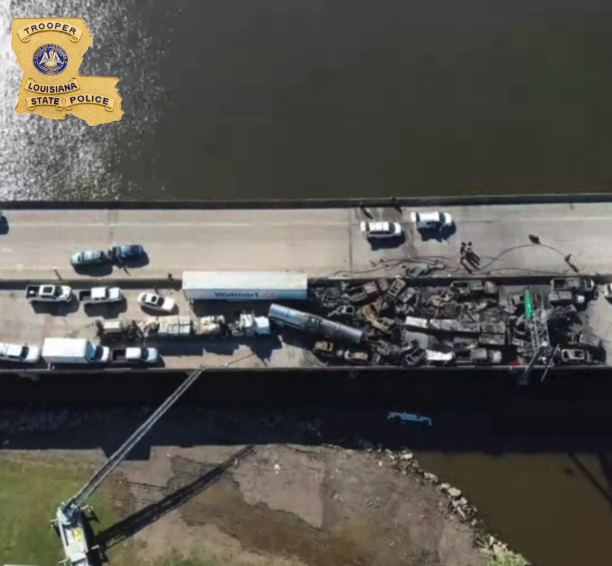A catastrophic pileup on Louisiana's Interstate 55 has left at least seven people dead and over 25 injured, with the number of casualties expected to rise. The accident, which involved a staggering 158 vehicles, occurred in St. John the Baptist Parish and has been attributed to a rare meteorological phenomenon known as "super fog."
The dense fog, which reduced visibility to near-zero levels, was particularly treacherous due to its combination with smoke from ongoing wildfires in the region. This blend of fog and smoke, termed "super fog," can reduce visibility to less than 10 feet, according to the National Weather Service. Such conditions made the interstate, located just west of New Orleans, a perilous stretch for drivers on that fateful Monday morning.
In the aftermath of the initial collisions, several vehicles, including a tanker truck carrying a hazardous liquid, caught fire, adding to the chaos and complicating rescue efforts. Authorities are still working to clear the scene and have expressed concerns about discovering additional fatalities once all vehicles are assessed.
Louisiana State Police have described the scene as harrowing, with vehicles severely damaged, some even burned to their frames. St. John the Baptist Parish Sheriff Mike Tregre recounted the challenges faced by first responders, who had to navigate the "completely gridlocked" scene on foot. "The situation is pretty bad," Tregre remarked.
Louisiana Governor John Bel Edwards expressed his condolences and urged caution for those traveling in areas affected by the combined threat of fog and wildfire smoke. "The combination of wildfire smoke and dense fog is dangerous, and I want to encourage all Louisianans in affected areas to take extreme caution while traveling," Edwards stated. He also emphasized the importance of blood donations to assist the injured, saying, "The best way you can help them, besides exercising caution on the road, is to donate blood at your local blood donation center."
The state of Louisiana has been grappling with a series of environmental challenges, including unprecedented wildfires, extreme heat, and a relentless drought. Over 62% of the state is currently experiencing exceptional drought conditions, the highest category tracked by the US Drought Monitor. The city of New Orleans is actively monitoring an underground fire in forested wetlands, a situation exacerbated by the summer's extreme heat and reduced water table depth.
While the immediate aftermath of the pileup is being addressed, there are concerns about the potential for similar incidents in the future. However, the National Weather Service in New Orleans has indicated that a repeat of Monday's super fog is unlikely for Tuesday, as stronger winds are expected. Nonetheless, patchy areas of dense fog may still pose a threat, albeit not as widespread as the conditions that led to Monday's tragic events.
As investigations continue and recovery efforts are underway, this incident serves as a stark reminder of the unpredictable challenges posed by nature and the importance of preparedness and caution.






